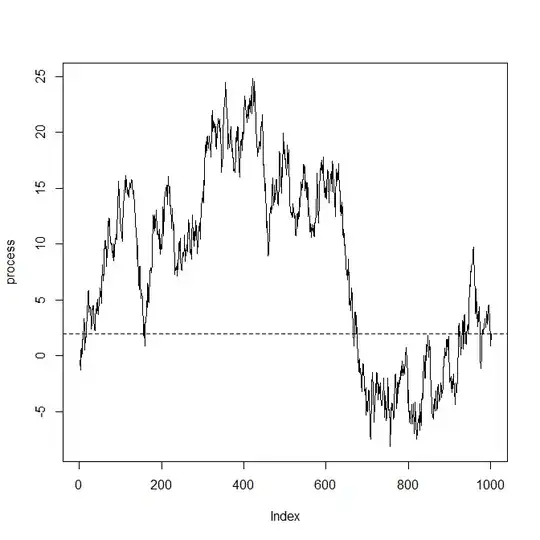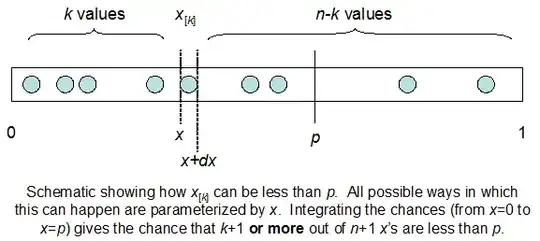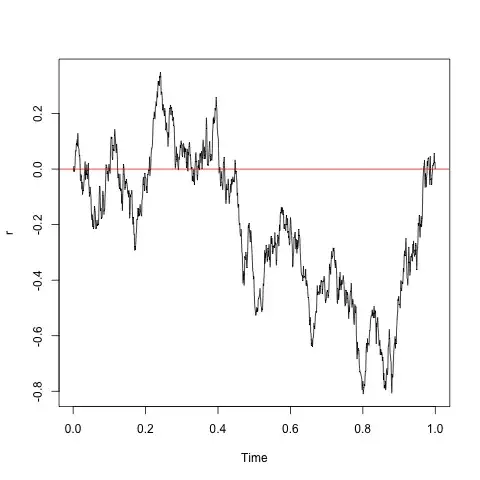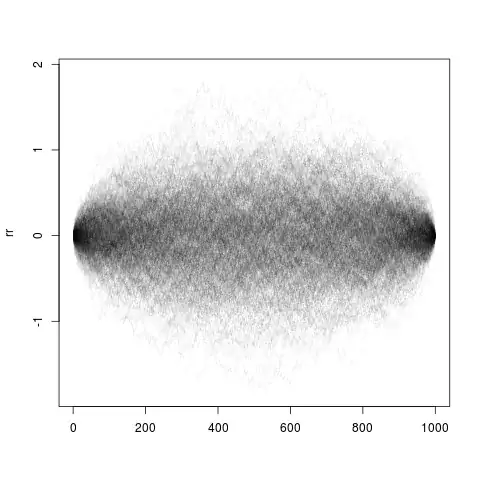I would like to show (demonstrate by simulation) a random process that turns out after $i$ interactions to be deterministic, i.e. ends at predefined value (roughly) known at time $t=1$.
Conditions for the solution:
1) The random process should display randomness visible (graph) = interactive
2) The "convergence" to the end result should be gradual and therefore the end result surprising to the observer.
3) Solution in R (hopefully).
The meaning of surprising in this case: I mean, during the generating process, the observer expectation is not (rational?) .... (Surprise in sense of conviction that random is not random after all).
Sub-question (setup):
Does it matter whether the terminal (final) value is revealed to observer a priori (at the beginning of the generating process series) or after the process ends (to confirm the values match)?
Summary:
1) If solution is not provided, how to approach it? (any hint helps)
2) Which tool (statistical/modeling) should be used? How to set up the process?
EDIT: improved version (of what I'm asking)
Simulate a (large) number of identically distributed but dependent random variables, such that their sum is ideally equal to a prespecified value, or failing that (for continuous RVs, we will hit a single number with probability 0), which is in a given range with a given probability. (with @Stephan kind help.)



